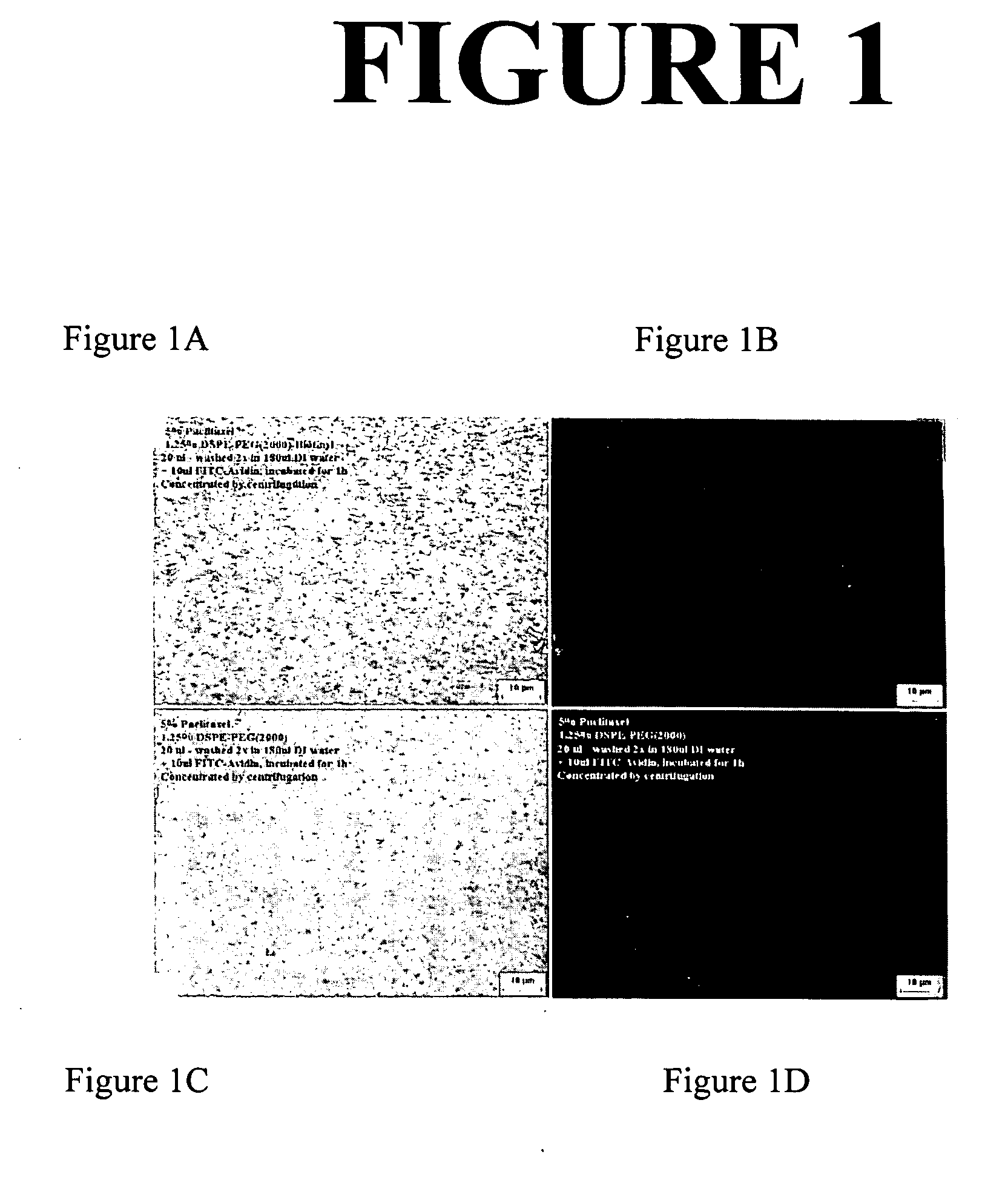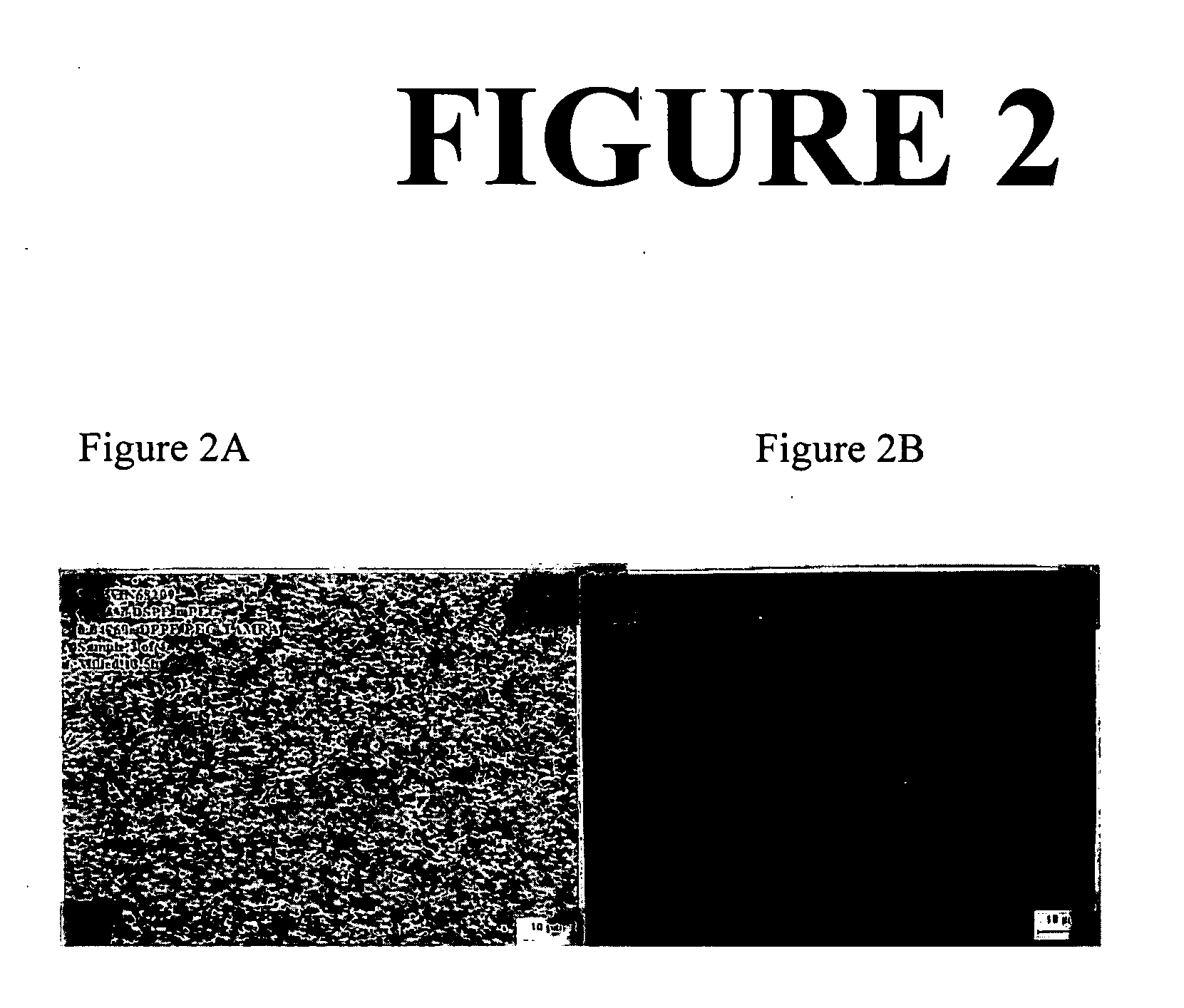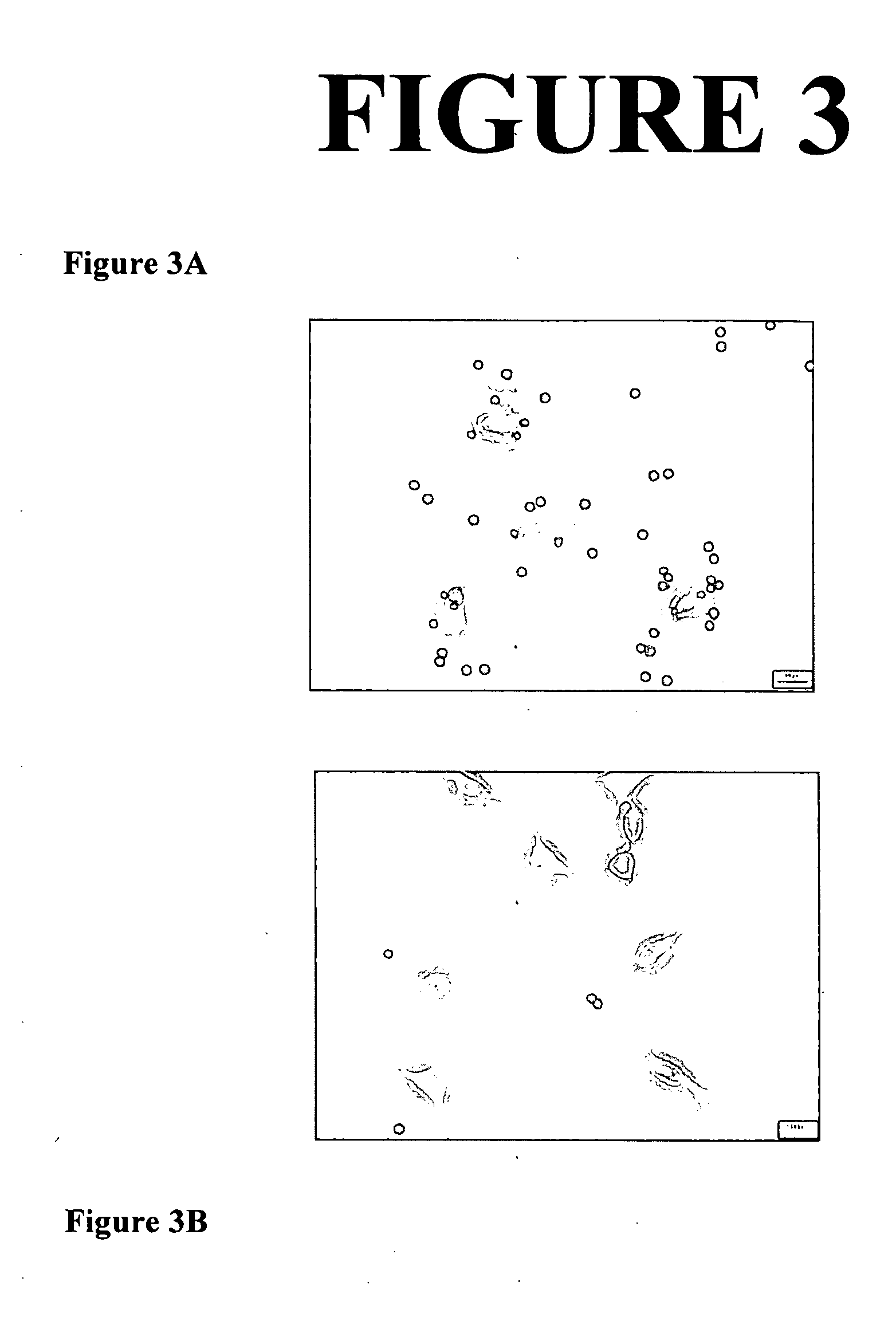Compositions comprising antibodies and methods of using the same for targeting nanoparticulate active agent delivery
a technology of active agents and compositions, applied in the direction of capsule delivery, drug delivery mechanism, drug compositions, etc., can solve the problems of increased circulation time of the component nanoparticulate active agent, inability to culture spleen cells, and inability to apply x-ray crystallographic and gene sequencing methods to monoclonal antibodies, etc., to achieve more effective compositions
- Summary
- Abstract
- Description
- Claims
- Application Information
AI Technical Summary
Benefits of technology
Problems solved by technology
Method used
Image
Examples
example 1
[0283] This example demonstrates the preparation of a composition comprising a poorly water-soluble nanoparticulate active agent and a PEG-derivatized phospholipid surface stabilizer with a biologically-active ligand. The ligand is a biotin fimctional group covalently coupled to the terminus of the PEG chain. A binding experiment was conducted with fluorescent avidin to confirm that the activity of the biotin functional group on the surface stabilizer is maintained after particle size reduction via milling of the active agent.
[0284] The active agent used in the example was paclitaxel. Paclitaxel belongs to the group of medicines called antineoplastics. It is used to treat cancer of the ovaries, breast, certain types of lung cancer, and a cancer of the skin and mucous membranes more commonly found in patients with acquired immunodeficiency syndrome (AIDS). It may also be used to treat other kinds of cancer. Paclitaxel has the following chemical structure:
[0285] Nanoparticulate pac...
example 2
[0292] This example describes the preparation of a composition comprising a poorly water-soluble nanoparticulate active agent and a PEG-derivatived phospholipid surface stabilizer with a fluorescent rhodamine label. Epifluorescence microscopy was ultilized to demonstrate that the fluorescent surface stabilizer associates with the active agent and maintains the ability to fluoresce after milling. The poorly water-soluble active agent utilized in this example was the x-ray contrast agent benzoic acid, 3,5-bis(acetylamino)-2,4,6-triodo-4-(ethyl-3-ethoxy-2-butenoate) ester (“WIN 68209”).
[0293] Two dispersions of WIN 68209 were prepared: (1) a dispersion of 5% (wt.) WIN 68209 and 0.67% PEG-derivatized 1,2-distearoyl-d62-sn-glycero-3-phosphoethanolamine (PEG-derivatized DSPE, Avanti Polar Lipids) and (2) a dispersion of 5% (wt.) WIN 68209 and 0.05% rhodamine-labeled PEG-derivatized 1,2-dipalmitoyl-d62-sn-glycero-3-phosphoethanolamine (PEG-derivatized DPPE, Avanti Polar Lipids, custom syn...
example 3
[0297] The purpose of this example was to demonstrate targeting of nanoparticulate active agent compositions comprising at least one antibody to cultured endothelial cells. In the following example, a biotinylated monoclonal antibody is coupled indirectly to a biotinylated PEG-derivatized surface stabilizer using the protein streptavidin as a linker.
[0298] The poorly water-soluble active agent utilized in this example was the x-ray contrast agent benzoic acid, 3,5-bis(acetylamino)-2,4,6-triodo- 4-(ethyl-3-ethoxy-2-butenoate) ester (“WIN 68209”).
Preparation of Nanoparticulate Dispersions of WIN 68209:
[0299] As described below, samples of WIN 68209 were milled in the presence of PEG-derivatized 1,2-distearoyl-d62-sn-glycero-3-phosphoethanolamine (PEG-derivatized DSPE, Avanti Polar Lipids). Targeting and fluorescence properties were conferred by including small amounts of modified versions of PEG-derivatized 1,2-dipalmitoyl-d62-sn-glycero-3-phosphoethanolamine (PEG-derivatized DPPE...
PUM
 Login to View More
Login to View More Abstract
Description
Claims
Application Information
 Login to View More
Login to View More - R&D
- Intellectual Property
- Life Sciences
- Materials
- Tech Scout
- Unparalleled Data Quality
- Higher Quality Content
- 60% Fewer Hallucinations
Browse by: Latest US Patents, China's latest patents, Technical Efficacy Thesaurus, Application Domain, Technology Topic, Popular Technical Reports.
© 2025 PatSnap. All rights reserved.Legal|Privacy policy|Modern Slavery Act Transparency Statement|Sitemap|About US| Contact US: help@patsnap.com



